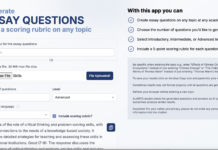Lederman, D. (2010) Borrowing from Bologna? Inside Higher Education, September 13
This is a report of an interesting initiative by the Lumina Foundation in the USA to establish what they call a draft of a “degree qualifications profile” that defines what graduates should be able to know and do when they receive associate, bachelor’s and master’s degrees, no matter where they earn them.
The Lumina Foundation’s initiative is influenced by one aspect of the Bologna agreement in Europe, which aims to have a uniform system of degrees across European countries. The reason behind Lumina Foundation’s initiative is that many of the same issues that Europe sought to attack — great variation in types and quality of institutions, concerns about the lack of transfer of credit across institutions, and questions about the higher education system’s performance and productivity – also apply equally well to the United States, with its very diverse higher education system.
My reading of the Lumina document, which is still a draft, is that it is a perfectly reasonable attempt to define broadly what you could expect from anyone obtaining different levels of qualification, such as an associate, bachelors, masters or doctoral degree, in terms such as applied learning, knowledge and skills. The main difference with the current system is that degrees in the Lumina document are defined by types of outcomes, not by the number of credit hours (although in Europe, this is still an important component of degree profiles.) However, the Lumina document does not address the issue of variations in quality within profiles (but then, nor does the Bologna process). In other words, the aim is to define minimum requirements in terms of varying levels of outcomes for different levels of degrees.
This is obviously a useful step for instance in establishing credit transfer agreements, but I think it is naive to think that this will lead to automatic credit transfer between two institutions as varied as Harvard and Lake Wobegone State University, even though they would probably have similar degree profiles. However, it might work between Lake Wobegone State University in Michigan, and Bart Simpson State University in Minnesota, which I suppose is progress. What is staggering is that there is still no agreement in North America (and I suspect elsewhere) as to exactly what a degree means, in terms of what people know or can do when they have got their degree. And wouldn’t a well constructed e-portfolio do this better than a degree transcript?










 Dr. Tony Bates is the author of eleven books in the field of online learning and distance education. He has provided consulting services specializing in training in the planning and management of online learning and distance education, working with over 40 organizations in 25 countries. Tony is a Research Associate with Contact North | Contact Nord, Ontario’s Distance Education & Training Network.
Dr. Tony Bates is the author of eleven books in the field of online learning and distance education. He has provided consulting services specializing in training in the planning and management of online learning and distance education, working with over 40 organizations in 25 countries. Tony is a Research Associate with Contact North | Contact Nord, Ontario’s Distance Education & Training Network.


Tony,
I agree completely with what you say but I would really like to know more about what you would expect in ‘a well constructed e-portfolio’. Any suggestions, headings or links would be appreciated. Using eFolio we could even build a dummy model?
BW
Ray T
Hi, Ray
Good question. In brief, what I had in mind was something like an online CV, with experience, skills and competencies listed, and then hot links from these to collections of work that demonstrate these skills. It would be like a set of layers that the reader could work through, going as detailed as they wished from more general statements, with each piece of ‘evidence’ authenticated by the institution that had assessed the work. Apart from the authentication, the learner would be responsible for the choice of material and even the structure, although a template or model might be provided by the institution at the start of the learner’s study.
Do you know of anything like this that is already in place at this level?